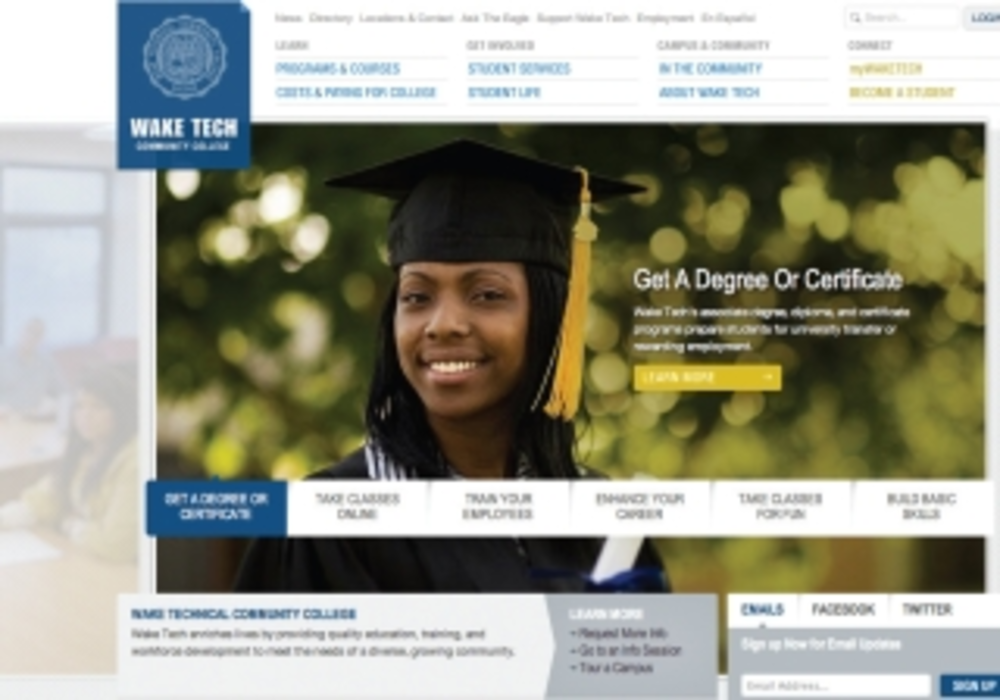As universities and community colleges face stiffer competition from each other, as well as new channels like online learning, higher education institutions are embracing digital tools and technologies to target students with more personalized campaigns. Many of these tactics have traditionally been used by for-profit schools.
According to last year’s Higher Education Marketing Trends Benchmarking Survey from CUnet and LeadsCouncil, 64% of education marketers increased spending on search advertising in 2011, while 61% boosted social media spend.
“For-profits have raised the stakes so much as far as how you specialize and how you market that it’s difficult for the not-for-profits to compete,” says Joe Diamond, COO at Alloy Education Management. “But education is going through a massive transformation as far as people accepting online learning. Instead of money going to buildings and brick-and-mortar, [it will] be increasingly going to marketing to students.”
For example, St. John’s University in Queens, N.Y., is expanding its digital marketing capabilities, and hiring new team members dedicated to online efforts. It’s also growing its email and mobile targeting capabilities.
“In higher education in the ’90s, one of the things that people always said when you were creating a cover for the Viewbook: ‘make sure you have a picture that every respective student can see themselves in,’” says Hallie Sammartino, VP of marketing and communications at St. John’s University. “Now we can use these strategies and new technologies to do that kind of personalization on what we send out to students.”
Though St. John’s rarely uses email marketing software like Campaign Monitor and various open source applications to determine whether an individual opened an email, clicked on the microsite or took some other action. Although she says it is still too early for hard metrics, feedback from internal and external constituents on the new content posted on the Web and pushed out electronically “has been substantial and positive.”
“You need to use those vehicles, but more importantly, find content that engages people at that personal level,” Sammartino says.
Stephanie Geyer, associate VP of Web strategy services at higher education consultants Noel-Levitz, agrees that colleges must improve their targeting. Noel-Levitz, Geyer recalls, recently developed a Facebook ad campaign for a university client targeted to individuals that “liked” a competing community college in the vicinity.
Indiana University taps into
students’ individual stories
students’ individual stories
The marketing team at Indiana University sought to enhance its outreach to prospective students. Reviewing internal research, as well as market studies from Pew Research Center and other outlets, the team began to notice a pattern.
Click to read the full case study.
“When they click on the ad, they are taken to a landing page that says, ‘Hey, we see you are connected to Broome Community College — are you a current student or have you graduated?’” Geyer says. “Using effective landing page strategies after you’ve gotten them to open an email or scan a QR code is an important piece, and where we gain a lot of data about behaviors and multivariate testing.”
In April, Hendrix College, a private liberal arts school in Arkansas published its first alumni magazine through Apple’s e-book application iBooks, optimizing the content for mobile devices. Working with digital firm Ektron, Inc., Hendrix streamlined its website and developed a mobile interface. The revamped site features a prominent dropdown menu where visitors can schedule a campus visit, click on the financial aid office’s Facebook page or fill out an application.
The website and associated marketing materials emphasize personal goals that go beyond standard academics, including references to “Artistic Creativity,” “Service to the World” and “Global Awareness.” The same branding is used throughout the application process in email and social media messaging. “Students may have an academic path, but they also have other passions in their lives,” says Frank Cox, EVP and CCO at Hendrix College. “We want our messages to reflect this broad experience.”
Tulane University created a microsite that touted how it is “Ranked first in the nation by the people who really matter.” This included mini documentaries featuring locals who were helped by the school’s people and programs, and lighthearted calls-to-action, such as “The last thing we want you to do is apply.” Tulane employs more digital in its marketing, moving away from direct mail pieces in favor of targeted emails and multimedia.
Wake Technical Community College has followed a similar path as it undergoes a complete revamping of its brand to coincide with the school’s 50th anniversary next year. Working with SEO and social media marketing firm VisionPoint, Wake Tech seeks to target its messaging by developing a number of “personas” that embody the various audiences a college is trying to reach. VisionPoint developed more than 30 distinct personas, ranging from recent immigrants seeking a basic education, to high-achievers looking to transfer to a four-year college, to senior citizens taking art classes.
Although it’s too early to determine results of Wake Tech’s rebranding, a similar campaign Vision-Point ran for NC State University’s Jenkins MBA program saw enrollment increase 94% after launching its new website and integrated marketing campaign. Another VisionPoint client, Campbell University, boosted undergraduate applications by 55% following the launch of its integrated admissions website.
“We want people to feel that connection to our college and picture themselves here,” says Laurie Clowers, associate VP of communications at Wake Tech. “By tailoring our messages … we’re hoping that the qualities that our college has can be made relevant to a broad cross section of the population.”






